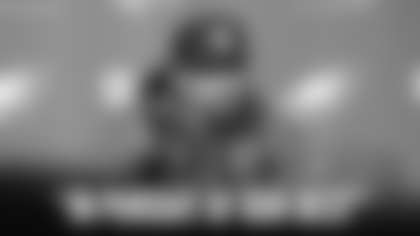You know, of course, how the Red Zone has become such a struggle for the Eagles. They lead the league in the number of times they have scored in the red zone versus the number of times they have reached the red zone, yet they rank 23rd in the league in touchdown percentage once inside opponents' 20-yard lines. The bad jokes and nasty criticism aside, the real question is this: What are the Eagles going to do about it to make it better immediately?
There are wrinkles the offense is going to add. Trust me on that one. They have an extensive playbook here, and some plays just haven't been used through nine games. But the long-term effectiveness of the Eagles in the red zone won't turn on a new play or two. The Eagles need improvement in every phase of their red-zone offense, starting with the plays that are called and working down to the precision and execution demonstrated by the players.
Once upon a time, the Eagles were as close to automatic in the red zone as the NFL allows. From 2000-2004, in fact, quarterback Donovan McNabb compiled a 101.6 passer rating in the red zone, accounting for 76 passing touchdowns, 17 rushing scores and just two interceptions in 229 red zone possessions. In 2004, the Eagles led the NFC with a 63.8-percent touchdown percentage in the red zone. They had Terrell Owens and Brian Westbrook and a great offensive line and McNabb was a dual-threat player whom defenses accounted for because of his great arm and his ability to make plays with his feet.
In 2005, despite all of the injuries and the lousy season, the Eagles ranked 12th in the league in red-zone efficiency, with a touchdown percentage of 53.7 percent. In 2006, the Eagles were 10th in the league with a 56.5 success rate on touchdowns and then, through now, the numbers have not been nearly as outstanding.
The 2007 Eagles were 24th in the league in success rate in the red zone, scoring points on 45.1 percent of their trips, and in 2008 the Eagles were 22nd with a 49.2-percent touchdown success rate. This year, the Eagles have scored touchdowns on 47.8 percent of their trips into the red zone, ranking 23rd in the NFL.
So what gives? Well, there are many reasons why and you can probably run the gamut trying to explain the decline. There is no T.O. here. The offensive line has declined over the years. McNabb hasn't been as sharp in the red zone. Westbrook has been hurt, and this year has played very little. The X's and O's are not where they need to be. All share in the responsibility.
Can the Eagles turn this around? Clearly, they have to turn it around, or they will not reach the post-season and make the kind of impact they expect to make.
What are we going to see when the offense lines up for a first down inside Chicago's 20-yard line on Sunday night? Anything radical? A change in philosophy? We'll see. Here are some suggestions I have ...
**RUN THE FOOTBALL
**
I know it didn't work in San Diego on two tries from the 1-yard line, but the Eagles should be better now with Jason Peters back on the field at left tackle and with Nick Cole at right guard. Stacy Andrews just doesn't have the push yet to clear space in the running game. I think the Eagles can run left behind Peters and left guard Todd Herremans. I think they can get some push on that side.
LeSean McCoy isn't Westbrook and there is certainly no guarantee that his career will ever reach the level that Westbrook has reached. But McCoy is a pretty big guy -- about 210 pounds -- and he is learning to run with more power. He and Leonard Weaver give the Eagles ample push if they want to go to a power running game. Eldra Buckley deserves another chance to deliver in short-yardage, too.
The key is that the Eagles win the battle at the line of scrimmage. They need their tight ends and the wide receivers to win their battles, too. They need to get off the ball quickly. That's hard to do on the road -- Soldier Field will be nuts on Sunday -- but the Eagles have to gain an edge.
I don't think the Eagles are going to shy away from running the football in tight. They have to gain some confidence in the offensive line. They have to have some success and score touchdowns on the ground.
**DUST OFF THE PLAYBOOK
**
When Westbrook was on top of his game, the Eagles used the Shovel Pass with such great success. They even opened the season in Carolina with one -- McNabb to Westbrook -- and the play produced a touchdown. Where has it been since then? Maybe with Westbrook out, the coaches are reluctant to use the play. Maybe he was just so good at catching the football with his back to the defense and then turning up the field and finding a seam that without him the play doesn't work. I don't know. It just seemed like money every time the Eagles ran it.
The other thought is to use McNabb more in sprint/option sets and see if he can create with his legs. That is a dangerous thought, given what happened in Carolina when McNabb suffered a fractured rib as he fell into the end zone. Still, it would shake up the defense to see a designed draw, or a bootleg, or something that gets McNabb to the edge with an option to run or pass the football.
Throwing a fade pass is also an option, but the Eagles lack the big, strong physical receiver who can go up and leap over a smaller cornerback. Scratch that idea.
There have to be some oldies but some goodies in the Andy Reid playbook somewhere. In 2003, before the arrival of Owens, the Eagles had a touchdown ratio of 62.7 percent in the red zone using wide receivers James Thrash, Todd Pinkston and Freddie Mitchell. The difference that year was the production from the backs. Correll Buckhalter had eight touchdowns on the ground, Westbrook had seven rushing and four receiving and fullback Jon Ritchie scored three times. Oh, and McNabb ran for 3 using his speed to outrun the defense.
**INCORPORATE MICHAEL VICK INTO THE PLAN
**
All of the hype and expectations for Michael Vick have largely been unrealized to this point. What gives? When the Eagles experimented with Vick in the preseason using him as the "Wildcat" quarterback, the results were impressive. And then when the Eagles used Vick in that preseason finale on the goal line and he scored a touchdown, a light went off: This is why Vick is here, I thought. He gives the Eagles another option on the goal line.
But nine games into the season, Vick has largely been overlooked. Either he hasn't shown the coaches what they want to see during practice, or Vick is simply not in the plans in short-yardage and goal-line situations.
It's time to get him some touches. The Eagles are desperate right now after flubbing three straight red-zone chances in San Diego. They are struggling too much in the red zone to not consider every possible alternative. Vick is an alternative.
Whether he plays in Chicago remains to be seen, of course. The Eagles need to explore it all offensively to sustain drives and score touchdowns. If Vick is what the Eagles thought he would be, he'll start to see some action. If he doesn't play, well, maybe he just doesn't have anything close to that blinding speed that made him so special in Atlanta.
**PLAYERS AND COACHES MUST STEP UP
**
This goes without saying, doesn't it? From the line, to the receivers, to the backs to the quarterback, the players have to win one-on-one battles in tight quarters to score touchdowns. The coaching staff can do all the scheming it wants to do, but in the end a great design of a play means nothing if the players don't make plays.
Everyone shares in the blame for the hard times in the red zone. For those who say the Eagles can't get better there, well, they just don't know football. For those who think the blame should be assigned to only one or two areas, that isn't fair, either.
As difficult as it has been at times recently for the Eagles to score touchdowns in the red zone, the not-so-distant past tells us it can turn around quickly. For that to happen, everyone needs to do his part and get the job done and build some confidence in the red zone.
It is appropriate, then, that the Eagles play Sunday night in Chicago. Last year, you remember, the Eagles failed on four plays inside the Chicago 5-yard line to score. They tried to ram the ball down the Bears' defense's throat, only to get turned back time (3 yards to the 1-yard line) and time (no gain from the 1-yard line) and time (no gain) and time (no gain) again. Now is the time to reverse the fortunes and put the ball in the end zone from the red zone.





















